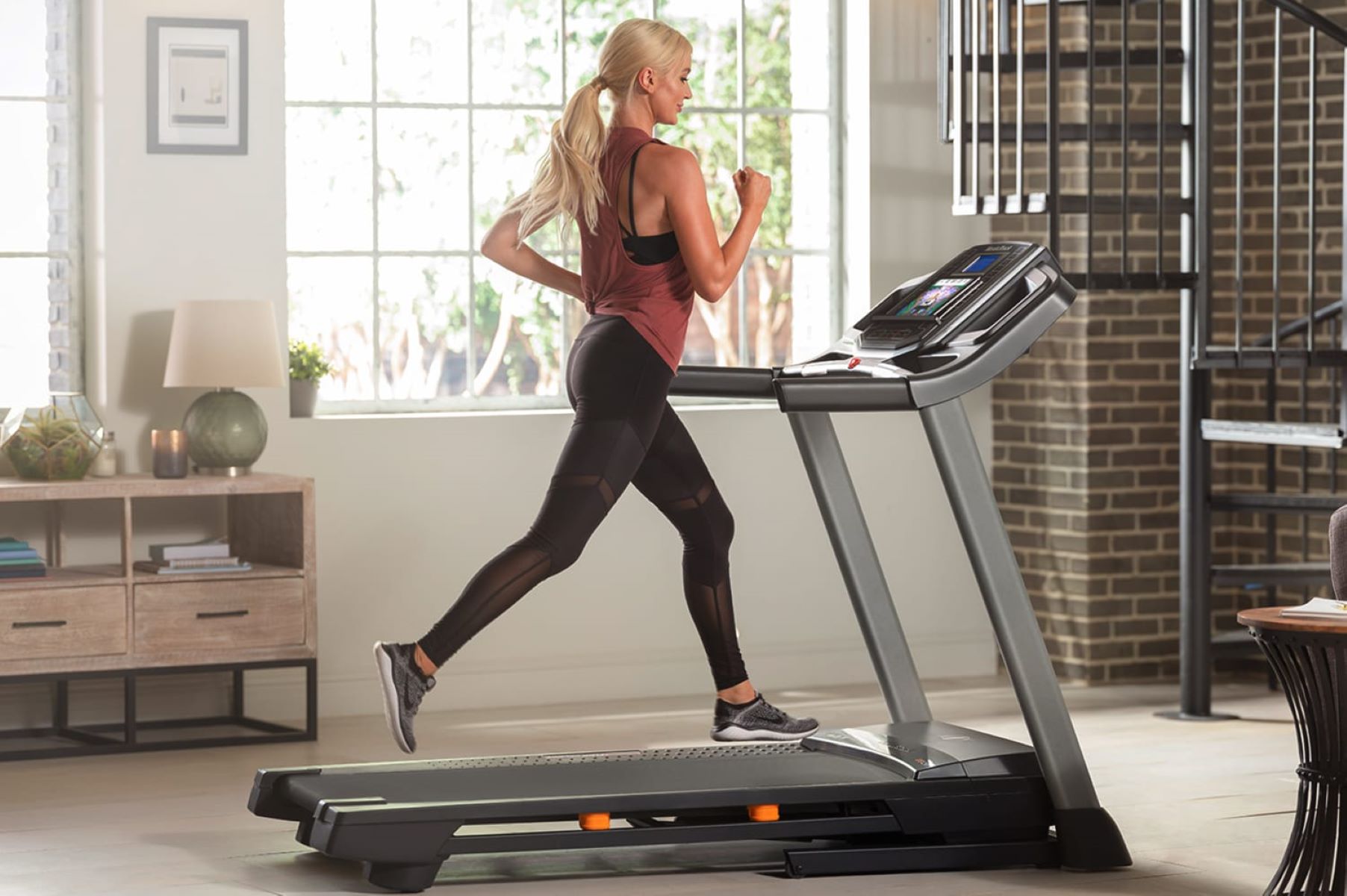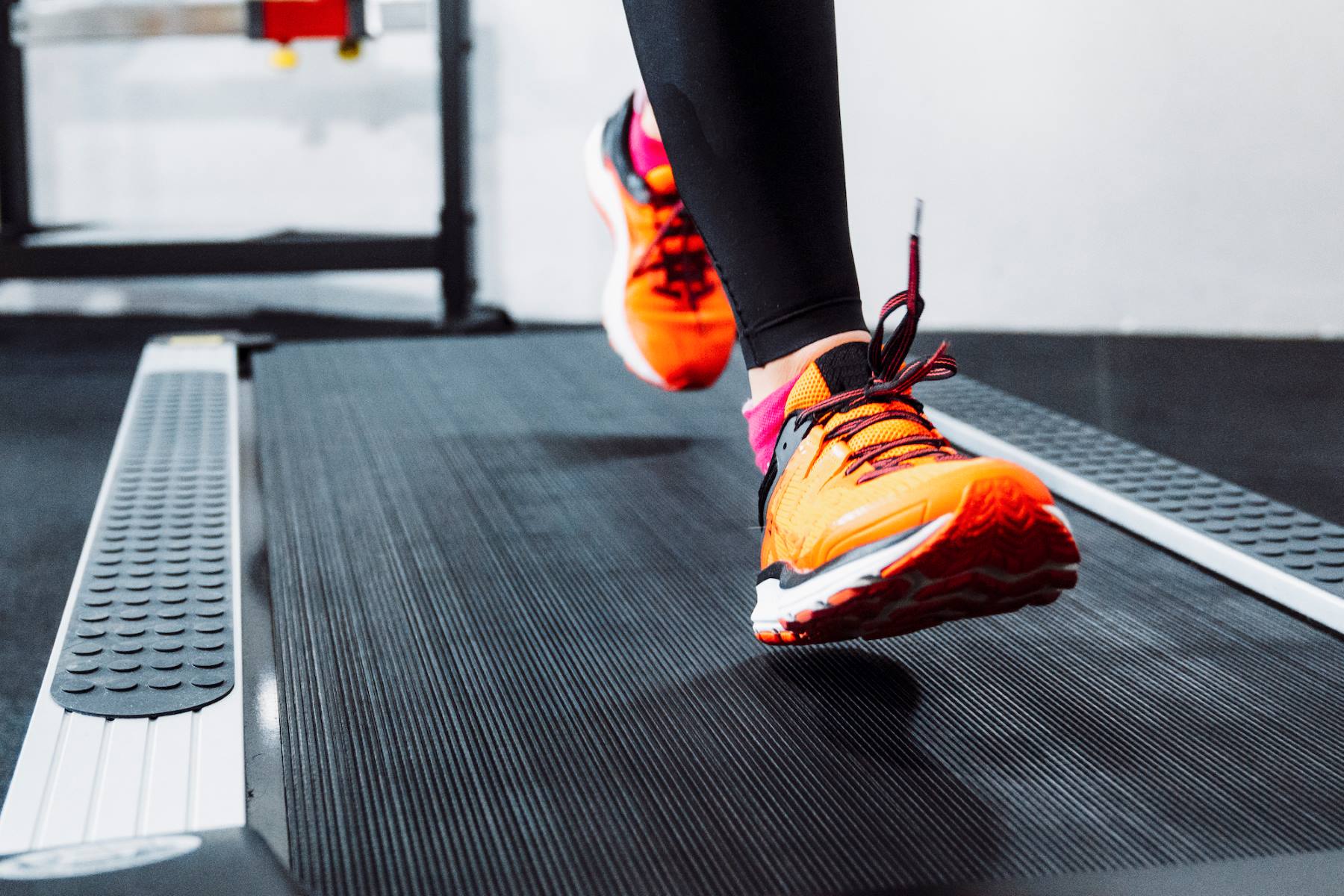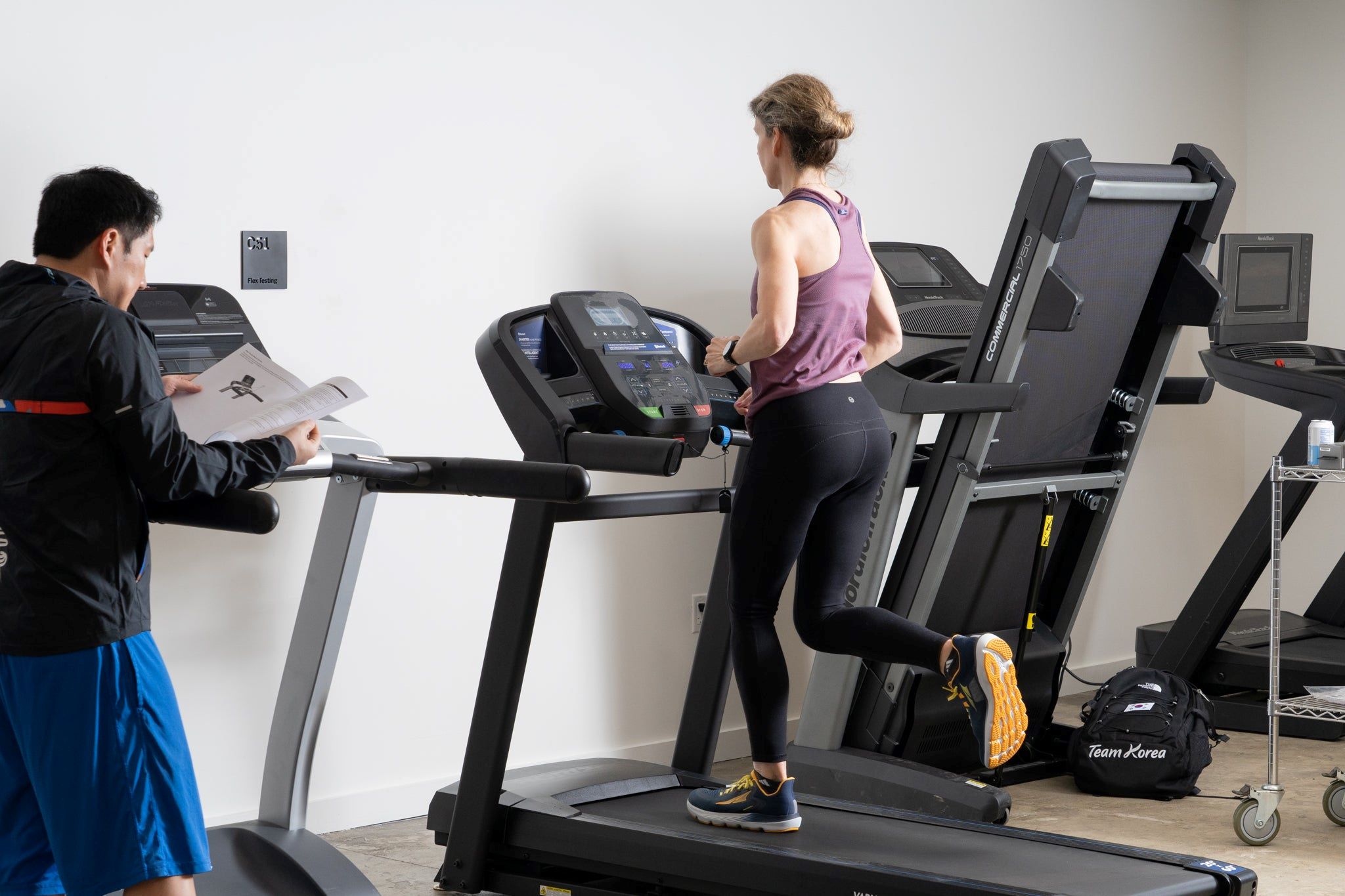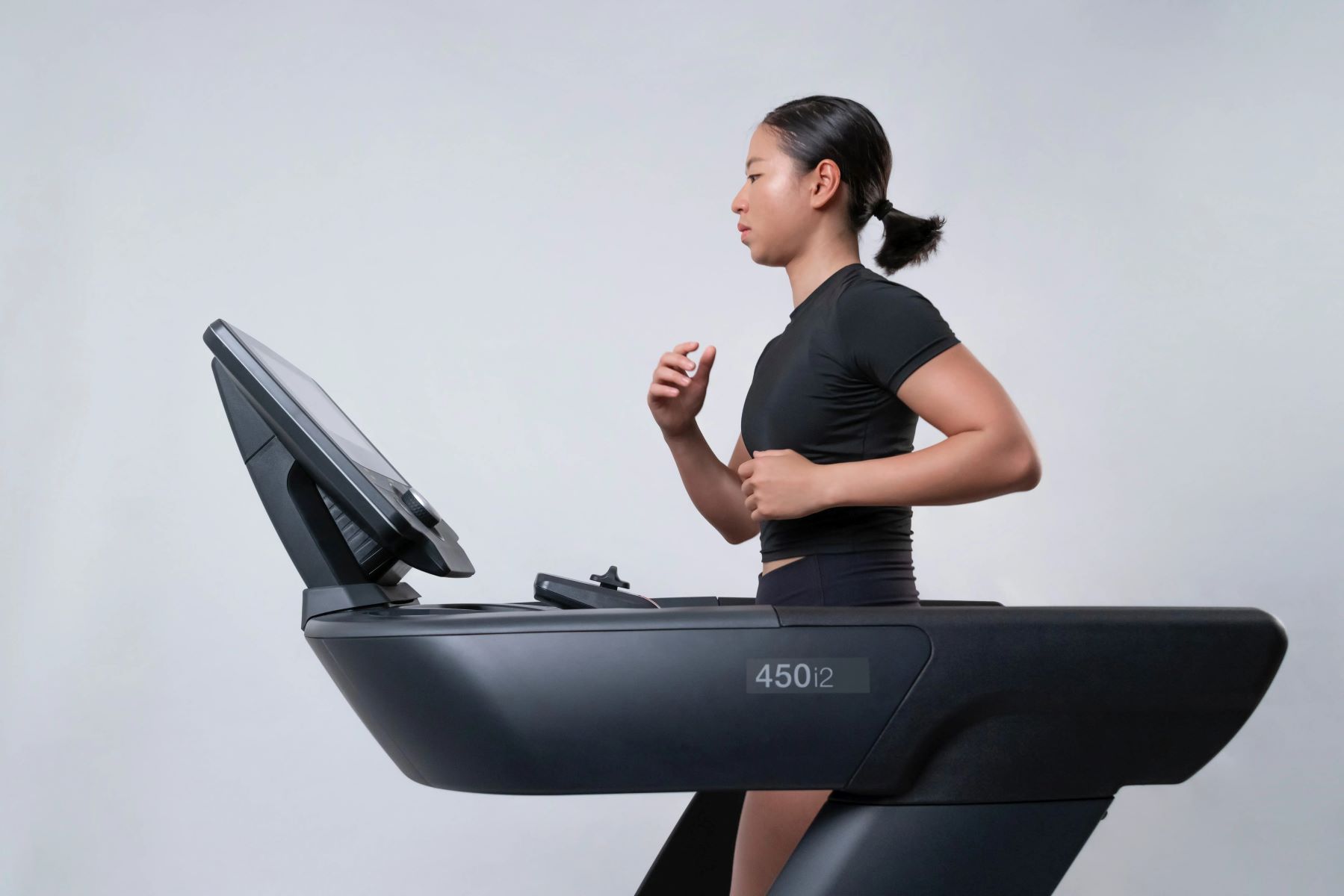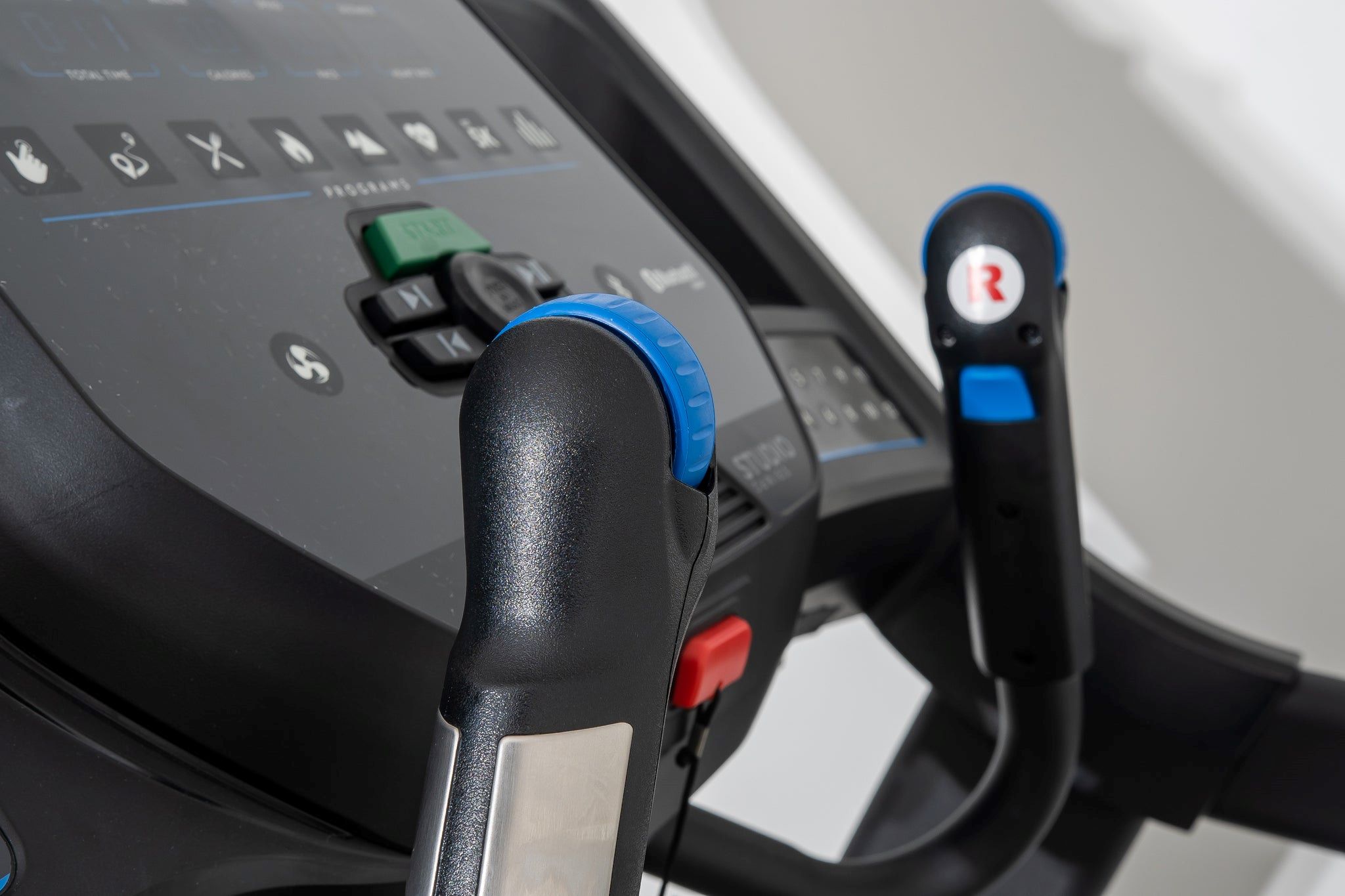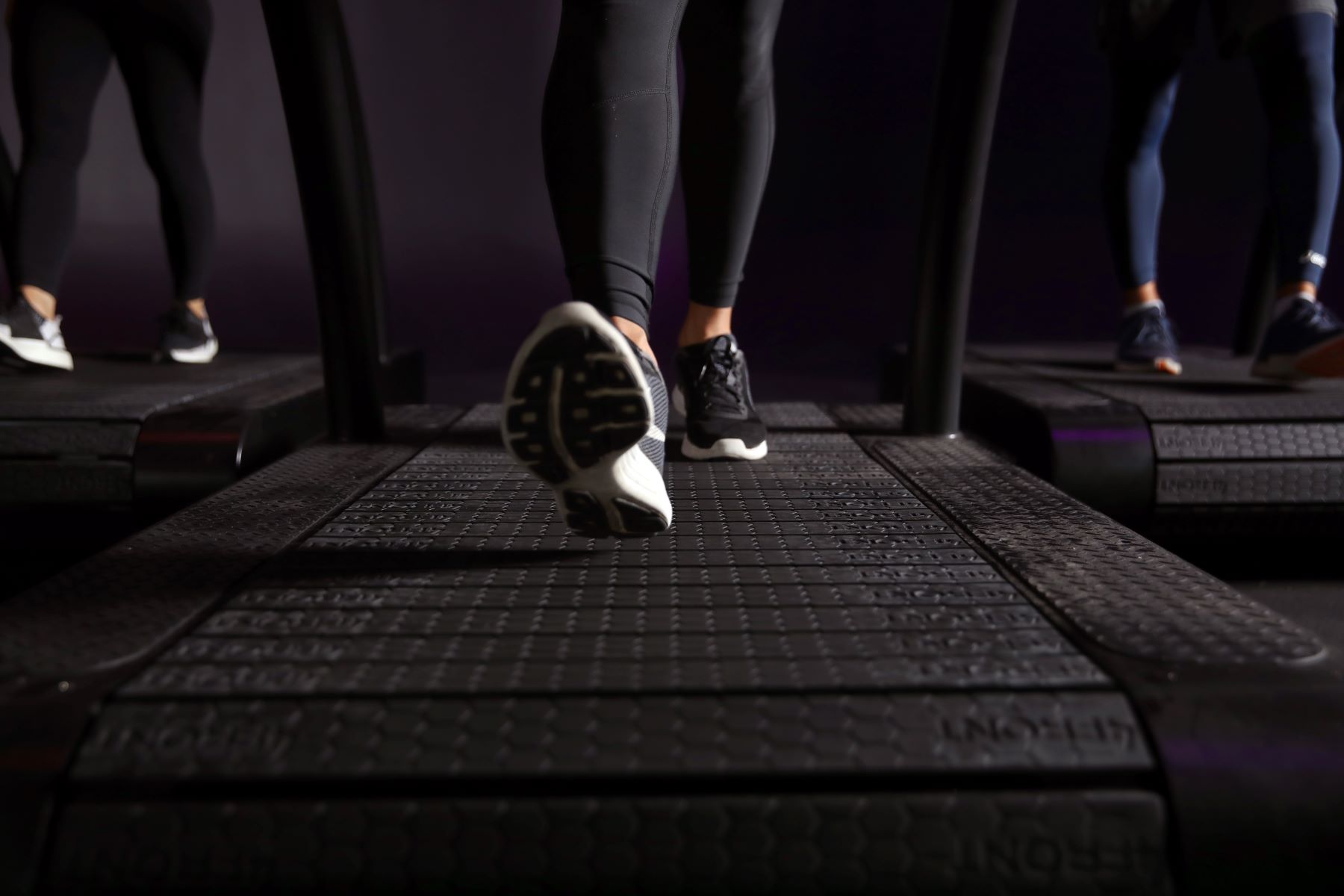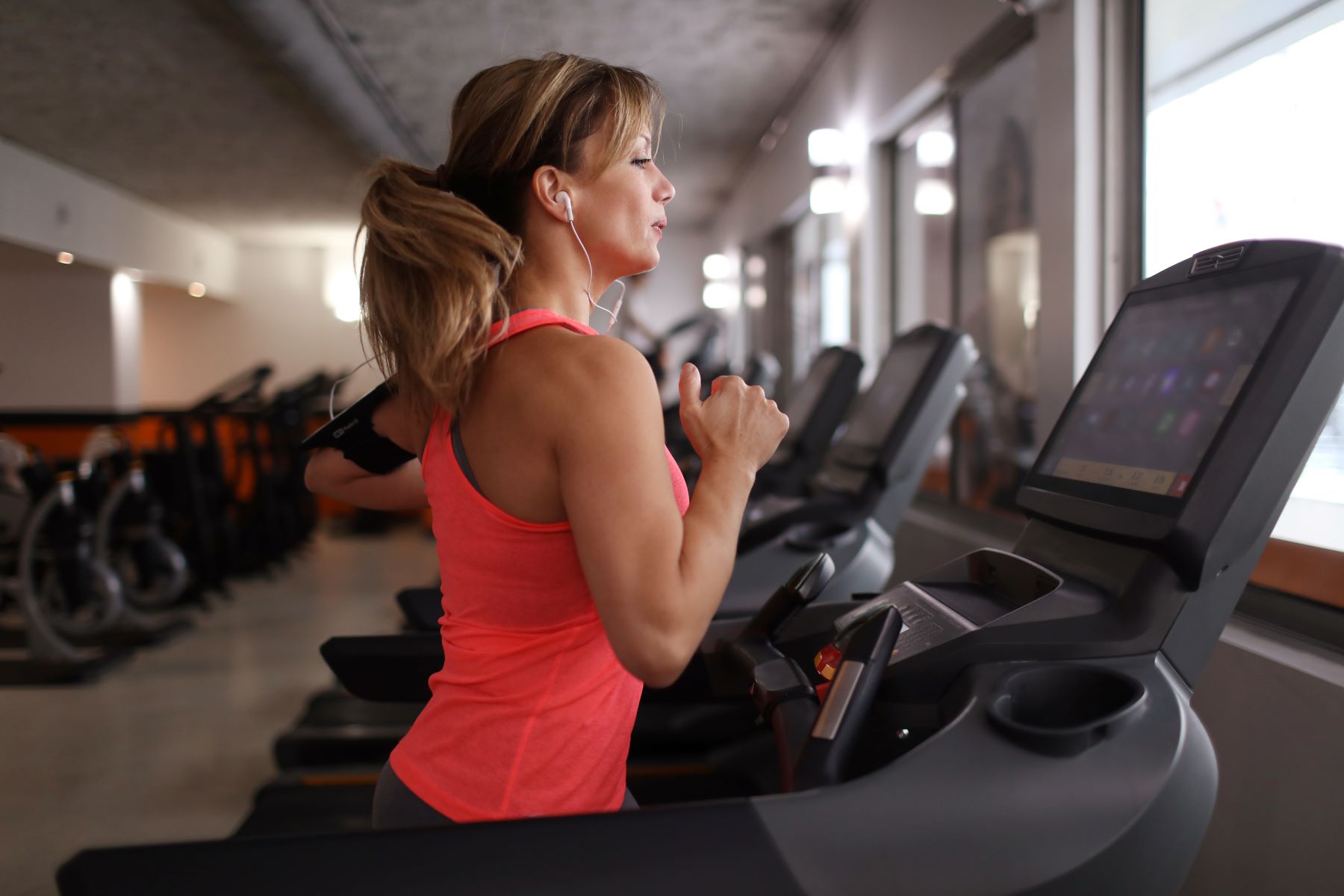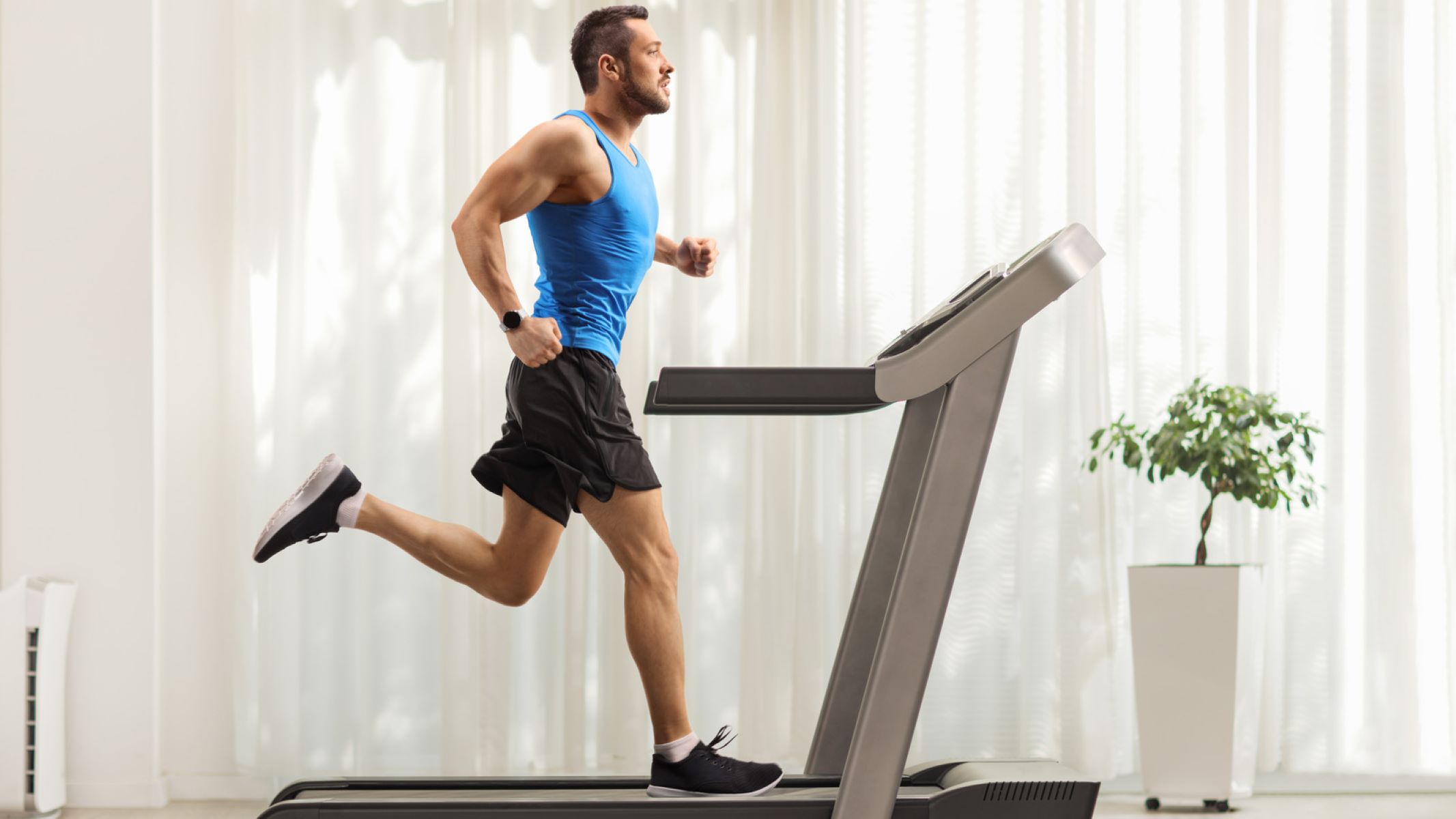

Featured
How To Read The Numbers On A Treadmill
Modified: January 2, 2024
Learn how to effectively read and understand a featured treadmill with our comprehensive guide. Master the key metrics and get the most out of your fitness routine.
Introduction
Welcome to the world of treadmills, where you can take control of your fitness journey and achieve your health goals right in the comfort of your own home or at the gym. Whether you’re a seasoned athlete or just starting out, understanding how to read a treadmill and make the most of its features is essential for an effective workout.
In this article, we will guide you through the basic functions of a treadmill and provide helpful tips on how to use its features to optimize your workouts. From understanding the display panel to adjusting speed and incline, monitoring your heart rate, and tracking your progress, we’ve got you covered.
Treadmills are versatile exercise machines that offer a wide range of benefits. From improving cardiovascular fitness, burning calories, and strengthening leg muscles to enhancing endurance and even simulating outdoor running conditions, a treadmill can be a valuable tool in your fitness routine.
However, with a variety of features, buttons, and display readings, treadmills may seem a bit overwhelming at first. But fear not! Once you familiarize yourself with the basics and learn how to decipher the information provided, you’ll be on your way to mastering this powerful fitness equipment.
Whether you’re embarking on a weight loss journey, training for a marathon, or simply aiming to improve your overall fitness level, understanding how to read a treadmill is the first step towards reaching your goals. So, let’s dive in and discover how to make the most of your treadmill workouts!
Understanding the Display Panel
The display panel of a treadmill is like the control center that provides valuable information about your workout. It’s important to familiarize yourself with the various readings and symbols to optimize your exercise routine. Let’s explore the key components you’ll find on most treadmill display panels:
- Time: This displays the elapsed time of your workout. It helps you keep track of how long you’ve been exercising and allows you to set goals based on the duration of your workouts.
- Distance: The distance reading shows how far you’ve traveled during your workout. Whether you’re aiming to run a specific distance or just want to monitor your progress, this feature is a great way to stay motivated and track your achievements.
- Speed: This indicates the speed at which you’re running or walking. It’s typically measured in miles per hour (mph) or kilometers per hour (km/h). Adjusting the speed allows you to customize your workout intensity and challenge yourself at different levels.
- Incline: The incline feature allows you to simulate uphill or downhill running. It’s measured in percentages or degrees, indicating the angle of the incline. Adjusting the incline can help target different muscle groups and add variety to your workout.
- Calories Burned: This reading estimates the number of calories you’ve burned during your workout. It’s based on factors like your weight, speed, and duration of exercise. Tracking calories burned can be useful if weight loss is one of your goals.
- Heart Rate: Many treadmills have built-in heart rate monitors either through sensors on the handlebars or wireless chest straps. Monitoring your heart rate during exercise helps you stay within your target heart rate zone for optimal cardiovascular benefits and safety.
Understanding how to read and interpret the display panel is crucial for monitoring your progress and ensuring you’re working at the right intensity for your fitness goals. Take some time to study the symbols and readings on your treadmill’s display panel, and refer to the user manual if needed. With this knowledge, you’ll be ready to take full advantage of this powerful fitness tool.
Basic Functions of a Treadmill
A treadmill offers a wide range of functions that can enhance your workout experience. Understanding the basic features and functionalities of a treadmill will help you maximize its benefits and tailor your workouts to your specific needs. Let’s explore some of the key functions:
- Power On/Off: The power button is used to turn the treadmill on and off. It’s typically located on the console or near the display panel. Always ensure the treadmill is properly powered off when not in use.
- Start/Stop: The start and stop buttons allow you to initiate and terminate your workout session. Pressing the start button will begin the treadmill at a low speed, and pressing the stop button will bring it to a gradual stop.
- Speed Adjustment: Most treadmills offer adjustable speed settings to accommodate different fitness levels. You can increase or decrease the speed using the designated buttons or the speed controls on the console. Make sure to start at a comfortable pace and gradually increase the speed as you warm up.
- Incline Adjustment: Incline functionality allows you to simulate running or walking uphill, providing a more challenging workout. It strengthens your leg muscles and increases the intensity of your routine. Adjust the incline using the designated buttons or controls on the console.
- Programmed Workouts: Many treadmills come with pre-programmed workouts that offer a variety of training options. These workouts are designed to simulate different terrains, speeds, and inclines, providing a diverse and engaging exercise experience. Explore the programmed workouts on your treadmill to add variety and challenge to your routine.
- Quick Keys: Quick keys are shortcuts that allow you to adjust speed or incline to specific levels with a single press. They provide convenience during your workouts and can save you time by eliminating the need to manually adjust settings.
- Emergency Stop: An emergency stop button is an important safety feature on a treadmill. It is designed to immediately stop the treadmill in case of an emergency or if you need to quickly halt your workout. Familiarize yourself with the location and function of the emergency stop button before starting your workout.
By understanding and utilizing the basic functions of a treadmill, you can create customized workouts that cater to your fitness goals and preferences. Experiment with speed, incline, and programmed workouts to challenge yourself and make your treadmill workouts more enjoyable and effective.
Safety Precautions
While treadmills are excellent exercise machines, it’s essential to prioritize safety to ensure injury-free workouts. Here are some important safety precautions to keep in mind when using a treadmill:
- Warm-up and Cool-down: Always begin your workout with a proper warm-up to prepare your muscles and gradually increase your heart rate. A brisk walk or light jog for 5-10 minutes is usually sufficient. Similarly, finish your session with a cool-down to gradually bring your heart rate back to normal.
- Proper Footwear: Wear supportive athletic shoes with good traction when using a treadmill. This will provide stability and reduce the risk of slips and falls. Avoid using sandals, flip-flops, or shoes with rubber soles as they may not offer adequate grip.
- Correct Speed: Start at a comfortable speed and gradually increase it as you warm up. Avoid setting the speed too fast for your current fitness level. Listening to your body and working within your limits is crucial for injury prevention.
- Use Safety Clips: Many treadmills come with safety clips or lanyards that attach to your clothing. These clips are designed to automatically stop the treadmill if you lose your balance or step too far back. Always use the safety clip as an extra precaution when using the treadmill.
- Proper Body Position: Maintain proper posture while using the treadmill. Keep your head up, shoulders relaxed, and core engaged. Avoid leaning forward or holding onto the handrails for extended periods as this can compromise your balance and posture.
- Stay Hydrated: Hydration is essential during any workout. Keep a water bottle within reach and take sips as needed to stay hydrated throughout your treadmill session. Avoid drinking excessively during high-intensity intervals as it may disrupt your rhythm and increase the risk of choking.
- Overexertion: Avoid pushing yourself too hard, especially if you’re a beginner or returning to exercise after a long break. Listen to your body and gradually increase the intensity and duration of your workouts to avoid overexertion and potential injuries.
- Clean and Maintain: Regularly clean and maintain your treadmill to ensure smooth and safe operation. Follow the manufacturer’s guidelines for cleaning, lubrication, and belt tension adjustment. Keep the area around the treadmill clear of any objects or hazards that could cause accidents.
By following these safety precautions, you can minimize the risk of injuries and enjoy a safe and effective treadmill workout. Remember, safety should always be a top priority to make your fitness journey enjoyable and sustainable.
Proper Warm-up and Cool-down Techniques
Warm-up and cool-down exercises are vital components of a safe and effective workout routine. They help prepare your body for exercise and aid in recovery afterward. Here are some proper techniques to follow for a thorough warm-up and cool-down:
Warm-up:
Before starting your main workout on the treadmill, it’s important to warm up your muscles and increase your heart rate gradually. A warm-up should last around 5-10 minutes and include the following steps:
- Start with a brisk walk: Begin your warm-up by walking at a comfortable pace. Slowly increase your speed to raise your heart rate and warm up your muscles.
- Dynamic stretches: Perform a series of dynamic stretches to loosen up your muscles and increase your range of motion. Examples include leg swings, arm circles, lunges, and high knees. Focus on the major muscle groups you’ll be using during your workout.
- Increase the intensity: Gradually increase the speed and incline of the treadmill to simulate the intensity you’ll be working at during your main workout. This helps prepare your cardiovascular system and muscles for the upcoming exercise.
Cool-down:
After completing your treadmill workout, it’s important to allow your body to gradually return to a resting state. A proper cool-down should also last around 5-10 minutes and involve the following steps:
- Decrease the intensity: Slow down the speed and reduce the incline of the treadmill. Transition from running to walking to bring your heart rate down and allow your muscles to recover.
- Static stretches: Perform a series of static stretches, holding each stretch for 20-30 seconds. Focus on the major muscle groups used during your workout, such as your calves, hamstrings, quadriceps, and hip flexors.
- Deep breathing: Take deep breaths and focus on your breathing during the cool-down. This can help promote relaxation and recovery.
By incorporating proper warm-up and cool-down techniques into your treadmill workout routine, you’ll help prevent injuries, improve flexibility, and enhance your overall performance. These simple steps ensure that your body is properly prepared for exercise and aids in the recovery process, allowing you to reap the maximum benefits from your workout.
Adjusting Speed and Incline
One of the key advantages of using a treadmill is the ability to adjust both the speed and incline to customize your workout and target specific fitness goals. Understanding how to effectively adjust these settings will help you optimize your treadmill workouts. Let’s dive into how to adjust the speed and incline:
Speed:
The speed controls on a treadmill allow you to adjust the pace at which you’re running or walking. Here are some guidelines for adjusting the speed:
- Start slow: If you’re new to treadmill workouts or warming up, begin at a comfortable walking pace. Gradually increase the speed as your muscles warm up and you feel more comfortable.
- Interval training: Interval training involves alternating between higher and lower speeds throughout your workout. This type of training can help increase your cardiovascular fitness and calorie burn. Experiment with different interval lengths and intensity levels to challenge yourself.
- Steady-state running: If you’re aiming for a consistent pace throughout your workout, find a speed that challenges you but is still sustainable. This will vary depending on your fitness level and goals.
- Cool-down: During the cool-down phase, gradually decrease the speed to allow your body to recover and your heart rate to return to normal. A slow walk is usually sufficient for the cool-down period.
Incline:
Adjusting the incline on a treadmill allows you to mimic the experience of running or walking uphill. Here are some tips for adjusting the incline:
- Choose a suitable incline: Beginners can start with a low incline, such as 1-2%, to add a little extra challenge to their workout. As your fitness improves, gradually increase the incline to target specific muscle groups and increase the intensity of your workout.
- Hill workouts: Incorporating hill workouts into your routine can improve leg strength and cardiovascular endurance. Increase the incline gradually and challenge yourself to maintain your desired speed while running or walking uphill.
- Vary the incline: To keep your workouts interesting and prevent plateaus, mix up the incline levels during your sessions. Experiment with interval training by alternating between high and low inclines to engage different muscle groups and add variety to your routine.
- Cool-down: Similar to adjusting the speed during the cool-down phase, gradually reduce the incline to allow your muscles to recover and prepare for a safe exit from the treadmill.
Adjusting the speed and incline on a treadmill provides endless possibilities for customization and progression in your workouts. By utilizing these features effectively, you can challenge yourself, target specific fitness goals, and continue to make progress on your fitness journey.
Using the Pre-programmed Workouts
Most modern treadmills come equipped with a variety of pre-programmed workouts that are designed to add diversity and challenge to your exercise routine. These workouts offer a wide range of options to keep your workouts interesting and help you achieve your fitness goals. Let’s explore how to effectively use the pre-programmed workouts on your treadmill:
Choosing the Right Program:
When selecting a pre-programmed workout, consider your fitness level, goals, and personal preferences. Treadmills typically offer a variety of options, such as fat burning, interval training, hill climbs, and endurance workouts. Take the time to explore the available programs and select one that aligns with your individual needs.
Understanding the Program Parameters:
Each pre-programmed workout has specific parameters, including duration, speed, incline, and intensity changes. Familiarize yourself with these parameters before starting the program. This will help you mentally prepare for the workout and understand what to expect throughout the session.
Follow the Instructions:
Pay attention to any instructions or prompts provided by the program. Some workouts may require you to manually adjust the speed or incline during specific intervals, while others may automatically adjust these settings for you. It’s important to follow the instructions closely to get the most out of the workout.
Monitor and Adjust as Needed:
Throughout the pre-programmed workout, listen to your body and be aware of how you’re feeling. If a certain speed or incline feels too challenging or too easy, feel free to make adjustments. Remember, the programs are there as a guide, but you have the flexibility to modify them to suit your fitness level and comfort.
Progress Gradually:
As you become more comfortable with the pre-programmed workouts, aim to gradually increase the intensity, duration, or difficulty of the programs. This allows for continuous improvement and helps prevent fitness plateaus. Challenge yourself with new workouts or advance to higher levels within the existing programs to keep progressing.
Using the pre-programmed workouts on your treadmill is an excellent way to add variety and structure to your training routine. It can help prevent boredom, keep you motivated, and allow you to target different aspects of fitness, such as endurance, speed, and strength. Experiment with different programs and find the ones that best align with your goals for a fun and effective treadmill workout experience.
Monitoring Your Heart Rate
Monitoring your heart rate during exercise is a valuable tool for tracking your cardiovascular fitness and ensuring that you’re working at an appropriate intensity level. Many treadmills offer built-in heart rate monitors, either through sensors on the handlebars or compatibility with wireless chest straps. Here’s how to effectively monitor your heart rate while using a treadmill:
Understanding Target Heart Rate:
Your target heart rate is the range at which your heart should be beating during exercise to maximize the cardiovascular benefits. It’s typically expressed as a percentage of your maximum heart rate (MHR). To calculate your estimated MHR, subtract your age from 220. For example, if you’re 30 years old, your estimated MHR would be 190 beats per minute (220 – 30).
Target heart rate zones are often categorized as percentages of your MHR. For moderate-intensity workouts, aim for a target heart rate of 50-70% of your MHR. For more intense workouts, such as interval training, aim for a target heart rate of 70-85% of your MHR.
Using the Heart Rate Monitor:
When using a treadmill with built-in heart rate monitoring, follow these steps:
- Ensure proper contact: If the treadmill has hand sensors, place your hands firmly on the sensors for a few seconds until your heart rate is displayed on the screen. If you’re using a chest strap, make sure it’s securely fastened around your chest and adjusted to the appropriate tightness.
- Monitor your heart rate: While exercising, keep an eye on your heart rate reading displayed on the treadmill console. If it’s too high or too low compared to your target heart rate zone, adjust your speed or incline accordingly to reach the desired intensity level.
- Take note of how you feel: Pay attention to how you’re feeling during your workout. If your heart rate is consistently too high and you’re struggling to catch your breath, it may be a sign to decrease the intensity. Conversely, if your heart rate is consistently too low and you’re not feeling challenged, you may need to increase the intensity.
Using Heart Rate Zones:
Understanding different heart rate zones can help you tailor your workouts to specific goals:
- Moderate intensity: This zone (50-70% of your MHR) is ideal for improving cardiovascular fitness and burning calories. It’s a comfortable pace that allows you to sustain exercise for longer periods.
- High intensity: This zone (70-85% of your MHR) is suitable for interval training and improving anaerobic fitness. It involves working at a higher intensity for shorter bursts with periods of recovery in between.
- Recovery: This zone (less than 50% of your MHR) is for cool-down and recovery periods. It allows your heart rate to return to normal gradually.
By monitoring your heart rate during treadmill workouts, you can ensure that you’re working at an appropriate intensity level for your fitness goals. It’s an effective way to gauge your cardiovascular fitness, track your progress, and make adjustments to your workout in real-time.
Tracking Your Progress
Tracking your progress is an essential aspect of any fitness journey. It allows you to set goals, measure your achievements, and make necessary adjustments to your workouts. When using a treadmill, there are several ways to track and monitor your progress effectively:
Keeping a Workout Journal:
A workout journal is a valuable tool for tracking your treadmill workouts. Record important details such as the date, duration of the workout, distance covered, average speed, and calories burned. Additionally, you can include any notes about how you felt during the workout, any challenges you encountered, or any personal milestones you achieved. This record will help you identify patterns, set new goals, and track your overall progress over time.
Using the Treadmill Display:
Most treadmills have built-in tracking features that can help you monitor your progress during your workout. Make use of the display panel to keep an eye on metrics such as time, distance, speed, and calories burned. Some treadmills even have features that allow you to create user profiles, set goals, and save your workout history for a more comprehensive progress tracking experience.
Utilizing Fitness Apps and Wearable Devices:
Take advantage of fitness apps and wearable devices that can sync with your treadmill workouts. These apps and devices provide detailed metrics, such as heart rate, pace, elevation, and even running dynamics. They allow you to analyze your workout data, set goals, and receive personalized feedback to help you progress further in your fitness journey.
Setting Goals and Targets:
Having specific goals and targets is crucial for staying motivated and tracking your progress. Set both short-term and long-term goals that are measurable and achievable. For example, you might aim to increase your distance or improve your speed over a certain period of time. By regularly assessing your progress toward these goals, you can make adjustments to your training plan and celebrate your accomplishments along the way.
Periodic Fitness Assessments:
Consider scheduling periodic fitness assessments with a fitness professional. These assessments can provide a more comprehensive evaluation of your progress and help you identify areas for improvement. They may include measurements of body composition, cardiovascular endurance tests, and muscular strength assessments. With this information, you can fine-tune your training regimen and optimize your treadmill workouts to achieve your desired results.
Tracking your progress allows you to stay focused and motivated on your fitness journey. By implementing these tracking methods, you’ll be able to see how far you’ve come, identify areas of improvement, and set new goals to continue challenging yourself and reaching new heights.
Maintenance and Cleaning Tips
Proper maintenance and cleaning of your treadmill are essential for ensuring its longevity, smooth operation, and hygiene. By following these maintenance and cleaning tips, you can keep your treadmill in excellent condition and enjoy optimal performance:
Regular Cleaning:
Regularly clean your treadmill to remove dirt, dust, and sweat. Here are some cleaning tips:
- Wipe down the surfaces: After each use, use a clean, damp cloth to wipe down the console, display panel, handrails, and any other surfaces that come in contact with your hands or body. This helps prevent the build-up of sweat and bacteria.
- Clean the belt and deck: Over time, debris and dust can accumulate between the belt and deck, affecting the treadmill’s performance. Periodically lift the belt and use a vacuum cleaner or soft brush to remove any dirt or debris underneath.
- Lubricate the belt: Check your treadmill’s user manual for instructions on lubricating the belt. This helps reduce friction and prolongs the lifespan of both the belt and the motor.
Regular Maintenance:
Perform routine maintenance to keep your treadmill running smoothly and minimize the risk of breakdowns. Here are some maintenance tips:
- Tighten loose bolts: Regularly inspect and tighten any loose bolts or screws on your treadmill. Loose parts can affect the stability and safety of the machine.
- Check the belt tension: Ensure that the belt tension is adjusted properly. If the belt feels too loose or too tight, refer to your treadmill’s user manual for instructions on adjusting the tension.
- Monitor the motor: Pay attention to any unusual noises or vibrations coming from the motor. If you notice anything out of the ordinary, consult the user manual or contact the manufacturer for assistance.
- Inspect the power cord: Regularly check the power cord for any signs of damage or wear. If you notice fraying or exposed wires, unplug the treadmill immediately and replace the cord.
Proper Placement and Environment:
Consider the placement and environment of your treadmill to ensure its longevity:
- Location: Place your treadmill on a flat, stable surface. Avoid placing it on thick carpets or uneven surfaces, as this may affect its stability and performance.
- Avoid direct sunlight and moisture: Keep your treadmill away from direct sunlight, excessive humidity, or damp areas. Exposure to moisture can damage the electronics and speed up the wear and tear of the machine.
- Proper ventilation: Ensure that there is ample space around the treadmill for proper airflow. This helps prevent overheating of the motor and other components.
By following these maintenance and cleaning tips, you can prolong the lifespan of your treadmill and enjoy consistent performance. Regular cleaning, routine maintenance, and proper placement will help keep your treadmill in top condition and provide you with a safe and enjoyable workout experience for years to come.
Conclusion
Understanding how to read a treadmill and utilize its various features can greatly enhance your fitness journey. By familiarizing yourself with the display panel, adjusting speed and incline, using pre-programmed workouts, monitoring your heart rate, tracking your progress, and maintaining your treadmill, you can maximize the benefits of this versatile exercise machine.
A treadmill provides convenience, versatility, and customization options for individuals of all fitness levels. Whether you’re aiming to improve cardiovascular fitness, burn calories, increase endurance, or train for a specific event, a treadmill can be a valuable tool in reaching your goals.
Remember to prioritize safety by following proper warm-up and cool-down techniques, wearing appropriate footwear, and monitoring your body’s signals during your workouts. By staying mindful of your heart rate, adjusting speed and incline appropriately, and utilizing pre-programmed workouts, you can ensure that you’re working at the right intensity level for your fitness goals.
Tracking your progress through journaling, using the treadmill’s display panel, fitness apps, and wearable devices, setting goals, and scheduling periodic assessments can help you stay motivated and monitor your achievements. Additionally, maintaining and cleaning your treadmill regularly will not only extend its lifespan but also provide a hygienic and smooth exercise experience.
So, whether you’re a beginner or an experienced fitness enthusiast, the knowledge and skills gained from understanding how to read a treadmill will empower you to make the most of your workouts and achieve optimal results. Embrace the versatility and convenience of this powerful fitness equipment, and let it become a key component in your fitness routine.
Now, it’s time to step on the treadmill, press those speed buttons, adjust the incline, and embark on a journey towards improved health and wellness. Happy running and walking!
